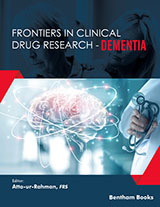Abstract
Falls and hip fractures are common conditions among older people with Alzheimer’s disease (AD) and are associated with high risk of morbidity and mortality. People with AD have up to an 8-fold increased risk of falling and 3-fold higher risk of hip fractures, compared with those who are cognitively intact. The increased risk of hip fractures among people with dementia may occur through a few pathways, including (a) risk factors that are common to both conditions, (b) the presence of dementia increasing incidence of hip fracture through intermediate risk factors such as falls and osteoporosis, and (c) side effects of treatment used in AD increasing hip fracture risk. A better understanding of these mechanisms and their effects on outcomes after hip fracture will assist in developing effective interventions and improving preventive strategies. Population aging heightens the need to recognize the interactions of these conditions in order to improve efforts to prevent hip fractures, improve outcomes through high-quality acute care and rehabilitation that returns patients to premorbid level of functioning, and provide evidence-based secondary prevention of falls or fragility fractures. Acute care of hip fractures focusing on orthogeriatric comanagement has been shown to reduce length of hospital stay, perioperative complications including delirium, readmission rate and premature mortality. Secondary prevention of falls and further fractures is essential by ensuring risk factors for falling are addressed and osteoporosis is treated. New experimental approaches are being investigated to manage osteoporosis through surgical approaches in people with extremely high risk of recurrent hip fractures.
Keywords: Alzheimer’s disease, Cognitive impairment, Dementia, Falls, Hip fracture, Orthogeriatric, Prevention, Rehabilitation, Risk factors, Treatment.






















